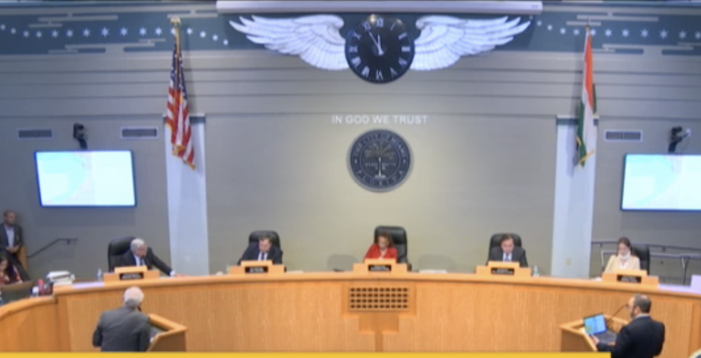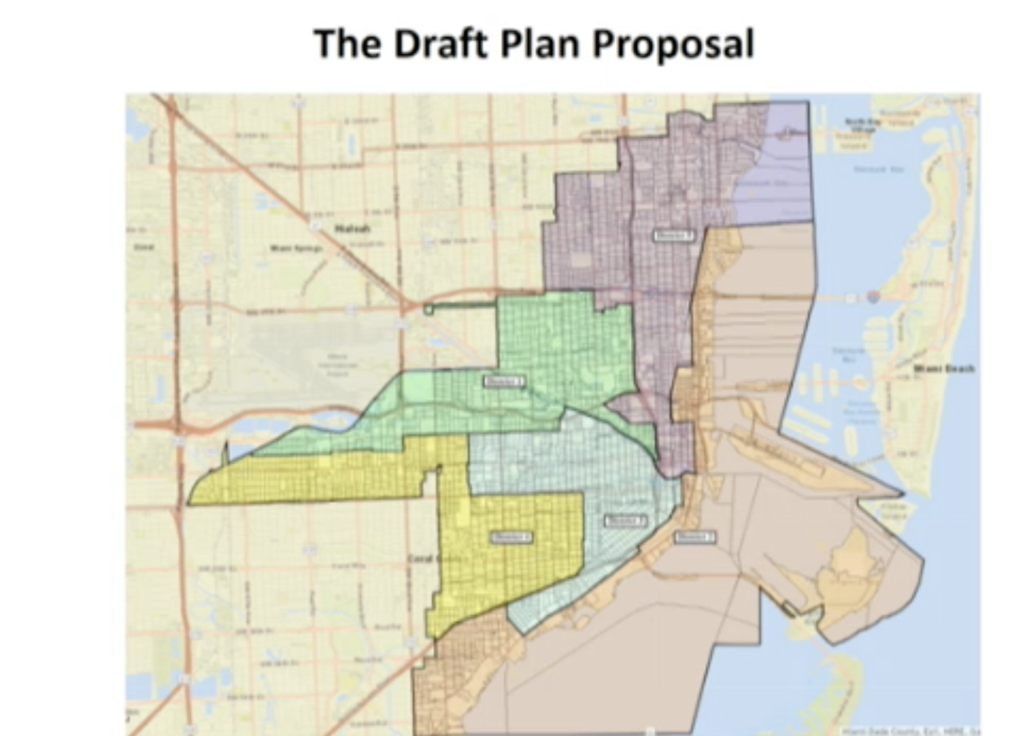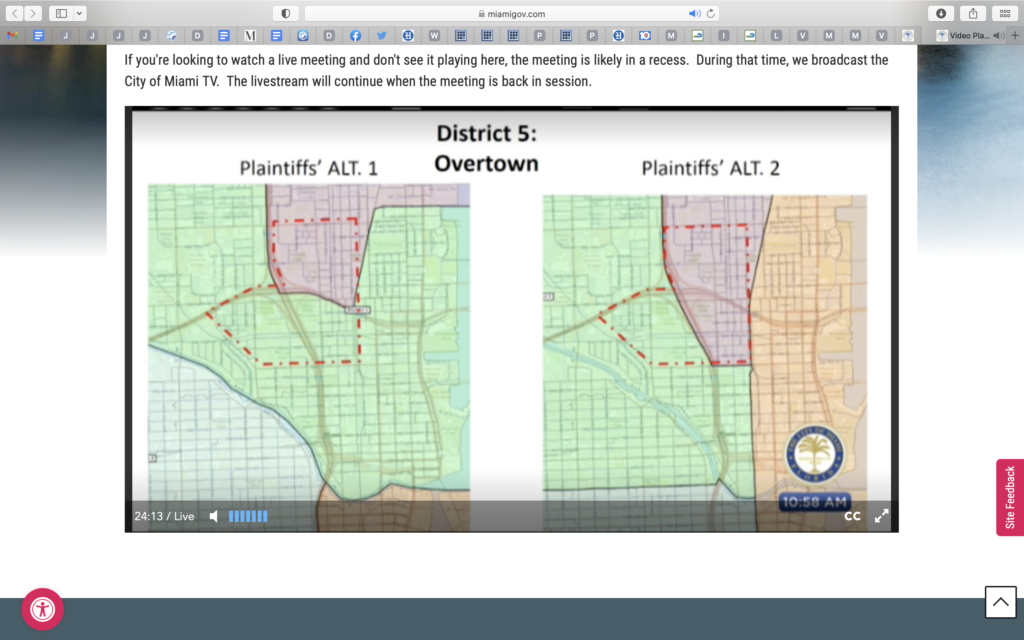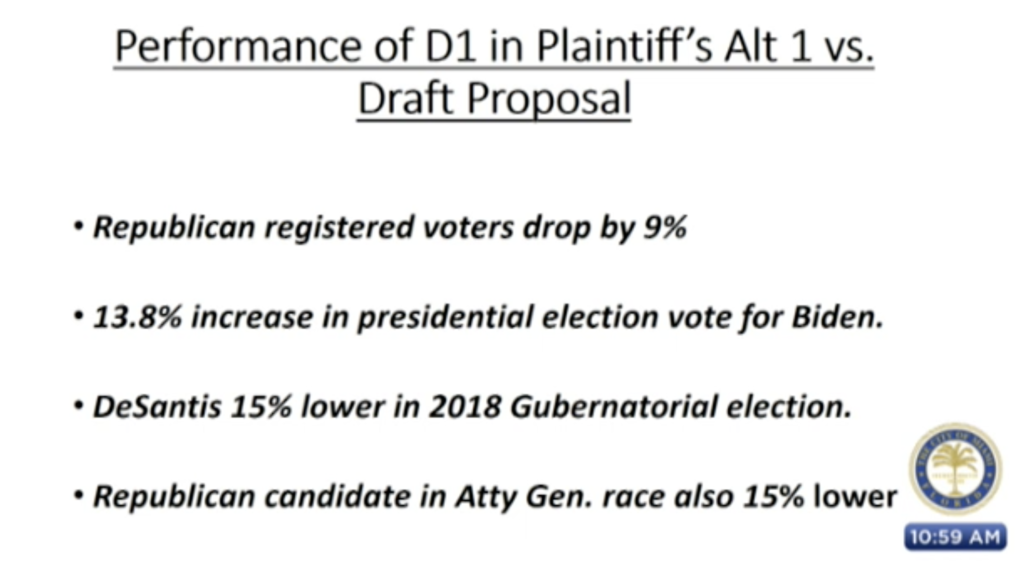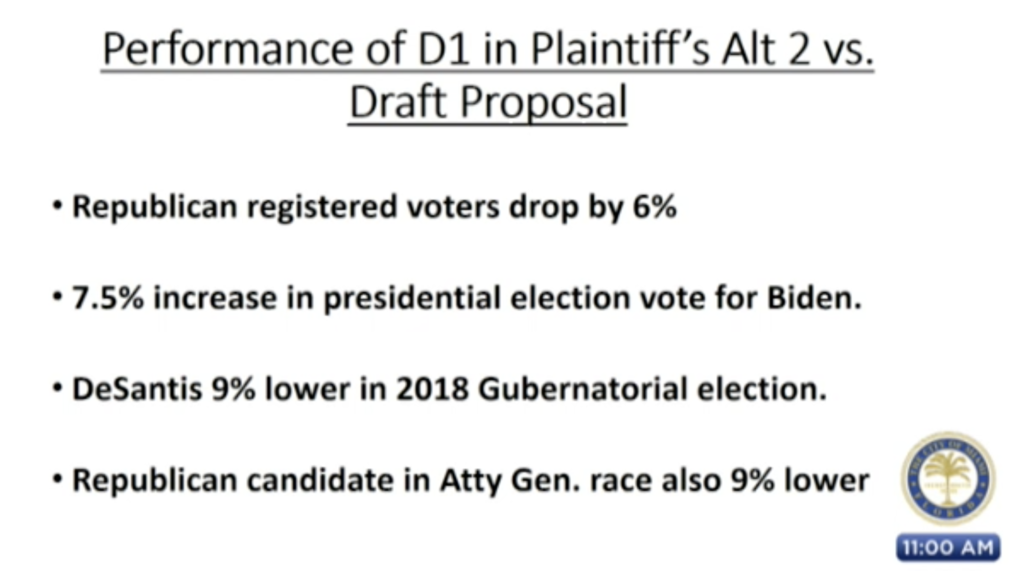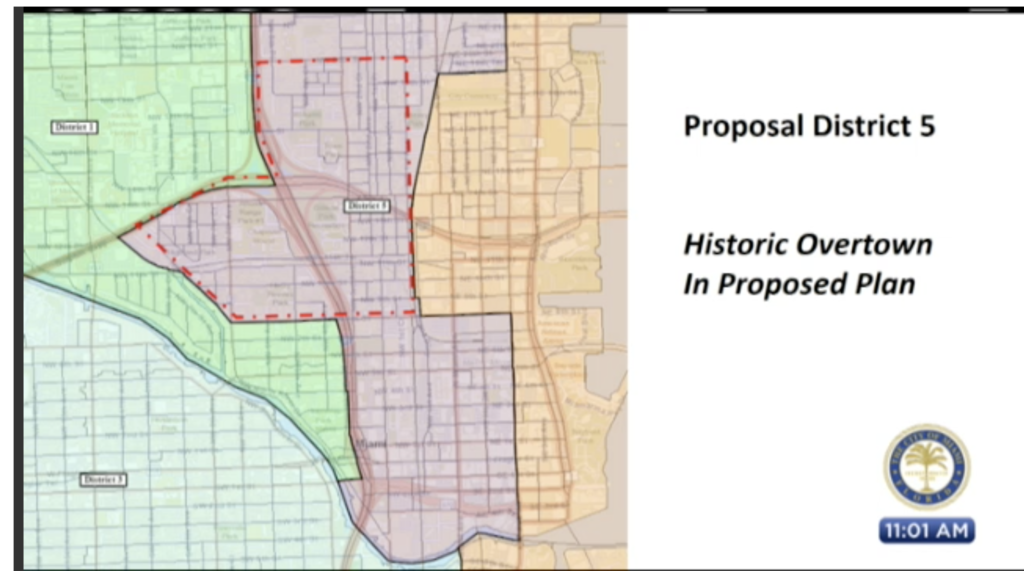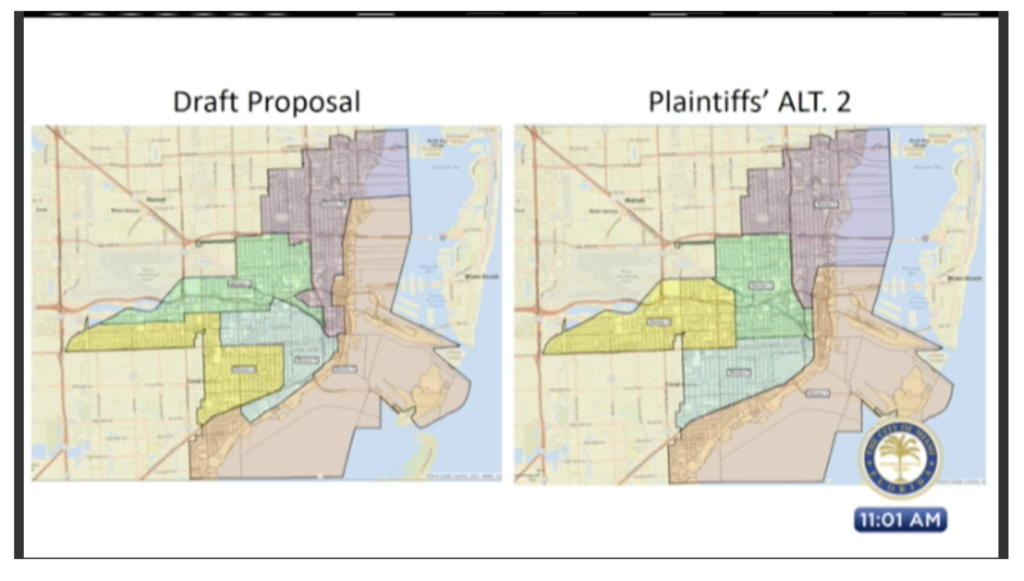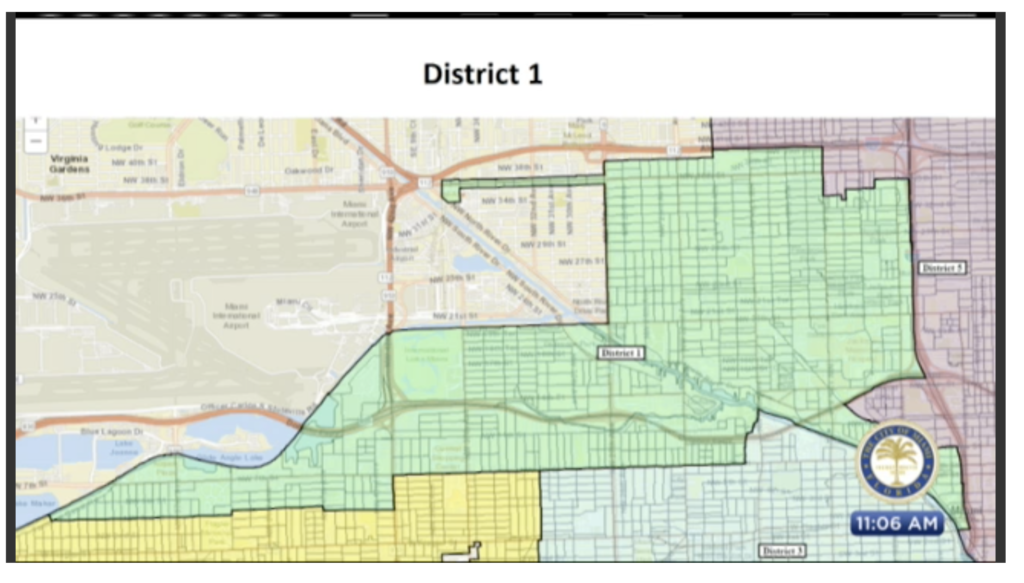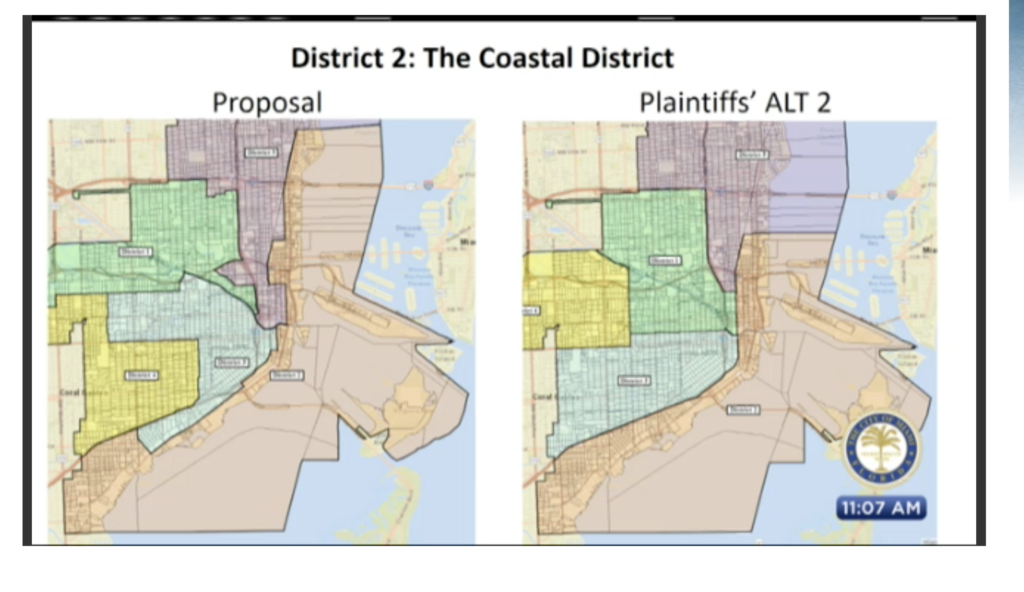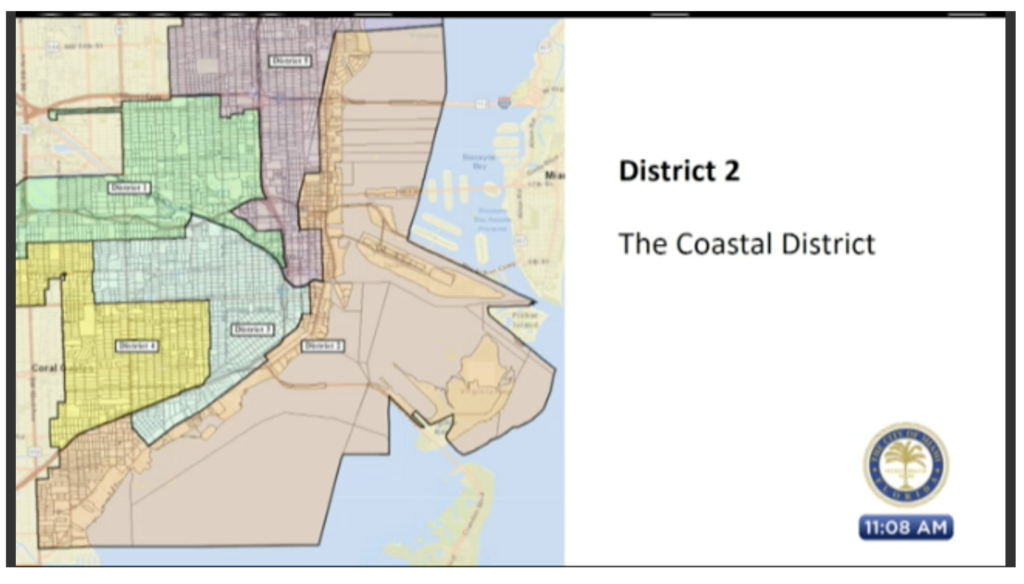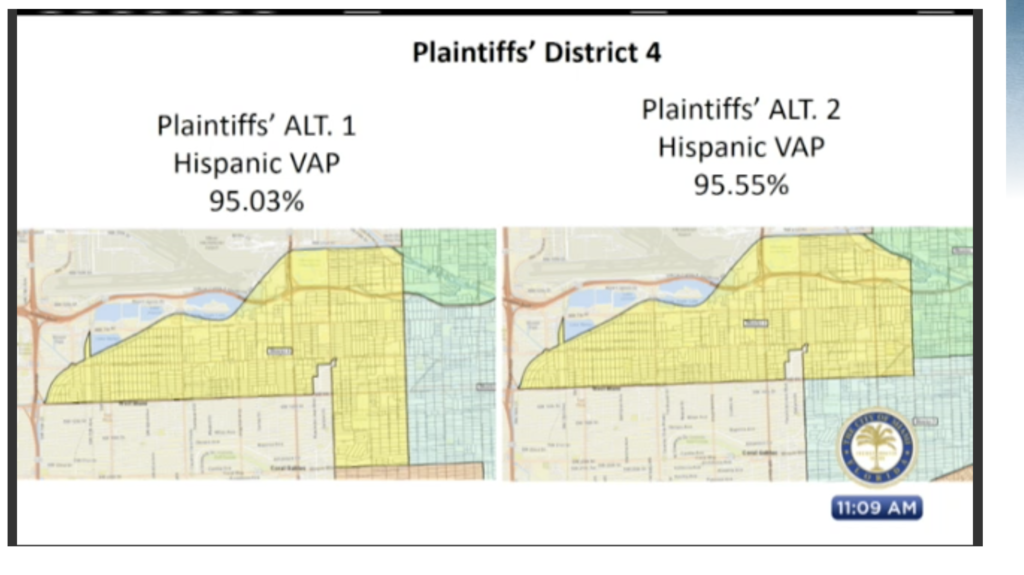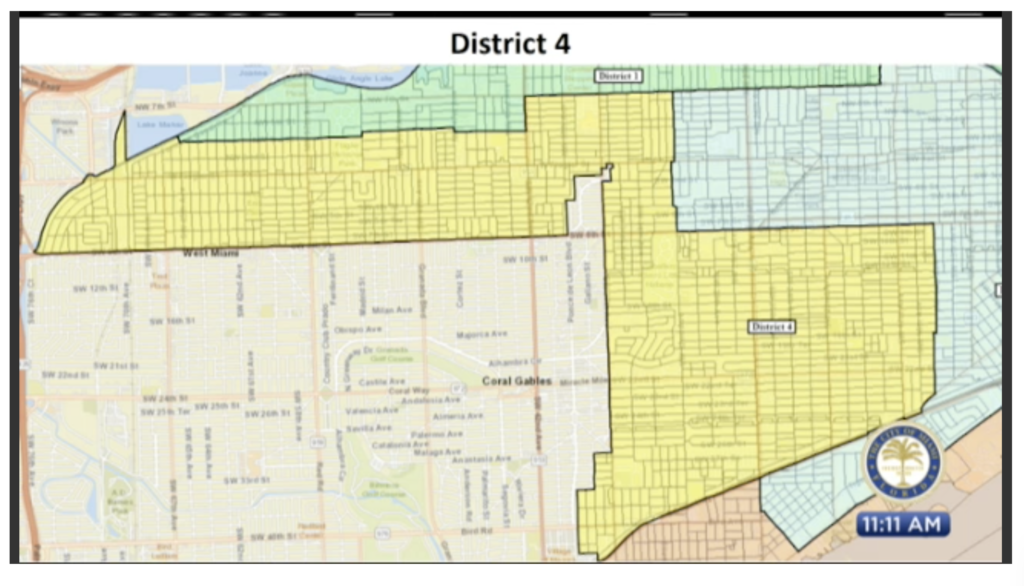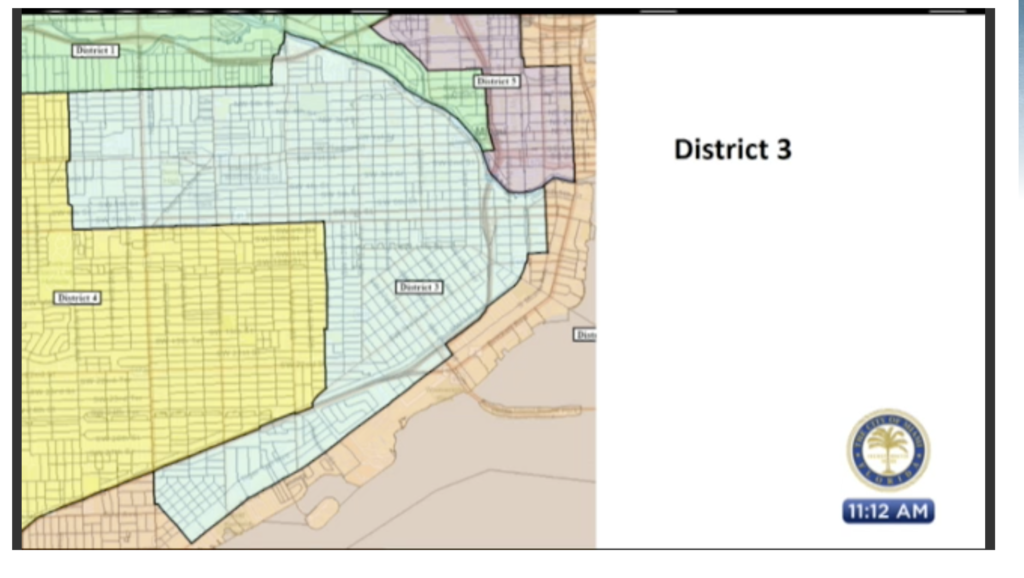Scolded for having passed a racially gerrymandered redistricting map and forced to start over after a federal judge threw it out, Miami city commissioners passed a new map Wednesday that, basically, doubled down on the gerrymandering and looks a lot like the old map.
This time, it’s blatantly political.
Using partisan presidential and Florida gubernatorial and attorney general election results for data, city consultant Miguel DeGrandy recommended that commissioners reject all three maps presented by the plaintiffs who sued to block the first city map, passed last year after united opposition from residents. A former Republican state legislator, DeGrandy said the plaintiffs three maps were drawn to manipulate future elections.
“They intentionally pack the most conservative voters into one district, with is District 4,” he said. “The plan is generated to result in a more liberal voting pattern for District 1.”
Read related: New Miami map draws opponent out of Alex Diaz de la Portilla’s district
The commissioners in districts 1, 4 and 2 are up for election this November. And one of the changes took out Commissioner Alex Diaz de la Portilla‘s opponent by drawing him out of the district — four months from the election. Anybody think that’s a coincidence?
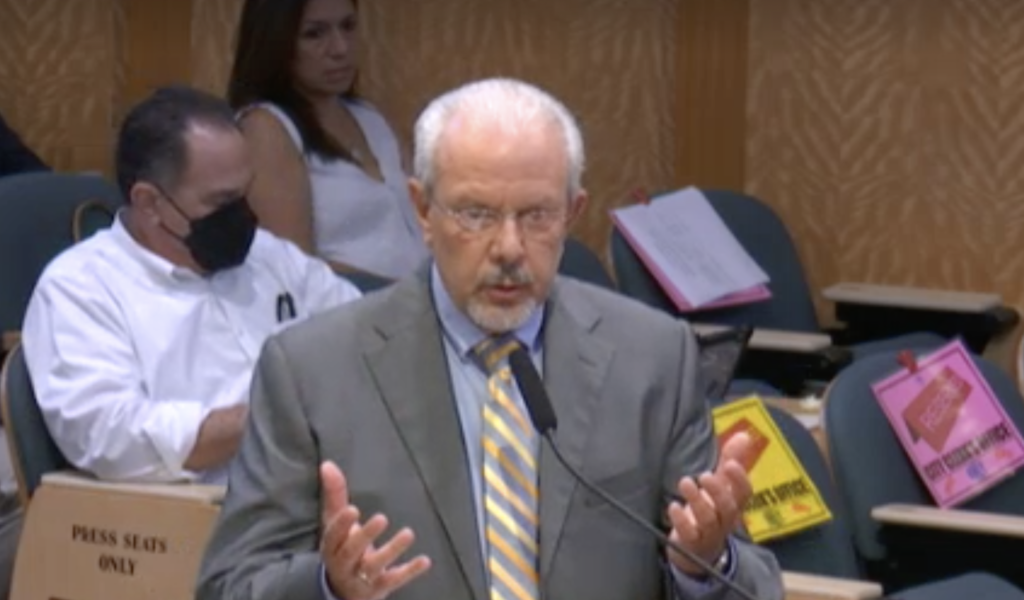
After a super long lunchtime recess — during which Diaz de la Portilla rewarded DeGrandy with ribs from Flannigan’s — commissioners voted 4-1 to approve the consultant’s 12th version with a few tweaks or amendments. Commissioner Sabina Covo, who tried just barely to keep Coconut Grove united, was the sole dissenting voice. She said she was cognizant that, as the most populous district, she had to lose some area, but that the numbers were too big and the communities were too divided. Covo thought it made more sense to lose part of the northern end of her district to District 5.
One of the amendments made, at least, was the reuniting of Morningside in one district after half of it was put temporarily in District 5. And the Black Grove is back in D2. But Covo lost Bay Heights — and Commissioner Joe Carollo got to keep his Grove house in District 3. While other neighborhoods — like Shenandoah and Flagami and Edgewater — were made whole, Carollo defended splitting the Grove apart.
“When you’re talking about the Grove, you’re talking about different neighborhoods,” he said. “Bay Heights, they even pay for their own security. Then you cross 17th Avenue and you have some of the biggest lots.
Read related: Joe Carollo votes to keep his house — and other Miami redistricting madness
“It’s very different when you go across 27th Avenue. Now the homes are reduced in lots. It’s not as expensive and it’s a very different area from what I’ve been seeing. You have young Hispanic families moving in there, fixing up the old homes and making them more expensive,” Carollo said. “Then the center Grove is totally different — more townhouses, more apartments. Then you go into the south Grove and you go again into very expensive areas. You take that to almost Cocoplum and that’s a whole different Grove. Last but not least, you go into the old Black Grove and that’s very different and changing every week as we speak because it is being gentrified like there’s no tomorrow.
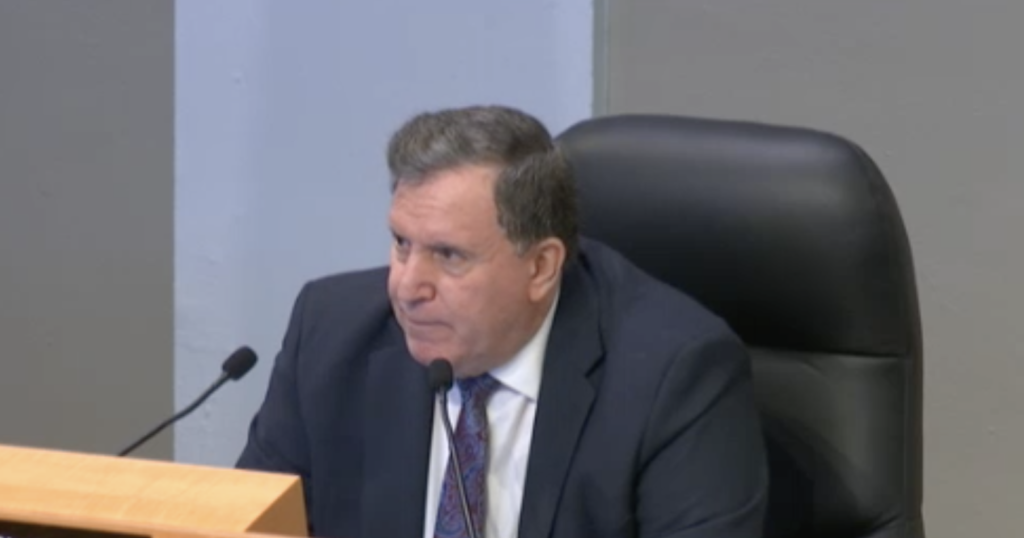
“So, what we call Coconut Grove, you have many, many, many communities living in Coconut Grove that have major differences,” Carollo said.
Isn’t that exactly what makes a good district? Carollo sounds like he wants to group all the poor people together to keep all the “expensive” areas free of them.
“I understand that it is very diverse, but the city as a whole is very diverse,” Covo said. “What my community has expressed to me is that they want to keep Coconut Grove together.
“I’m an advocate of keeping Coconut Grove together,” Covo said, adding that the presentation was confusing — and it was. This was not due to her inexperience. There were at least 14 versions of the map and not everyone knew which map was being worked off when.
Several of the public comment speakers asked for the Grove to be reunified. But it was nowhere near the number of residents who packed the meetings in February and March of last year, probably due to mixed messages from the city on a notice that said there would be no public comment at Wednesday’s meeting, which the city attorney confirmed to Ladra earlier this week. Some speakers thanked the commissioners for taking public comments, after all.
Yeah, thanks for following the law.
Read related: Miami commission doesn’t want public comment or input on new redistricting
“I would just like to ask you all to please preserve and put back together the 30 neighborhoods that were divided,” said Fleta Stamen, an attorney and longtime Grove resident. “And I’m stunned that we’re getting maps from two different groups in the audience. We didn’t even get your map. It’s very hard to respond without this in our hands.”
See? Everyone was confused.
DeGrandy had already said that he didn’t get the third map from the plaintiffs, which include the ACLU and Engage Miami, until 8 p.m. Tuesday. Chairwoman Christine King told Stamen she only got the map Wednesday morning. “It’s not that we are not trying to get the information out. They were working, both sides, late into the night last night. We are on a tight deadline imposed by the court.”
Said Stamen: “It just cuts us out of the process, and we’re the constituents.”
Ladra thinks that was by design. The commissioners were choosing their voters instead of the other way around.
In the end, the plaintiffs were not satisfied with a map that looks like commissioners went out of their way to protect their incumbency and other interests. The way that districts wrap around each other and the little appendages that jut out to capture coveted voters just looks like a big, intentional mess compared to the third map presented by the plaintiffs, which used natural and man-made borders to create compact districts that conformed to the requirements of the Fair Districts Act and maintained neighborhoods intact. Imagine that.
And they didn’t charge the city hundreds of thousands of dollars.
Nicholas Warren, a staff attorney with the ACLU, said they will send a response to the judge, who will make the final decision. He could approve the city map, approve one of the plaintiff’s maps or create a brand new map. Ladra’s money is on accepting the plaintiff’s map. This new map from the city does not indicate any real faith effort to address the gerrymandering the judge cited in throwing the first map out.
“We are very disappointed that they have doubled down on the original map and we’re going to oppose it in court,” Warren told Political Cortadito. “We hope the judge will see through this attempt to adopt the same gerrymandering as last year.”
No, actually, it’s gerrymandering plus.
If you like this story and want Ladra to spend more time on city of Miami stories, please consider making a donation. Thank you for our support to grassroots guerrilla watchdog journalism. And keep reading Political Cortadito!

